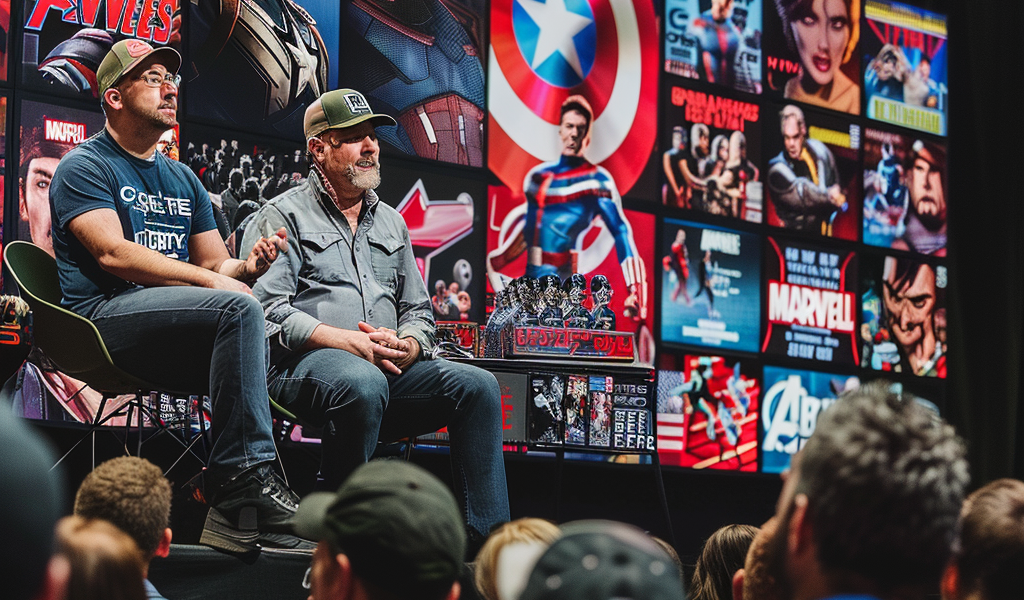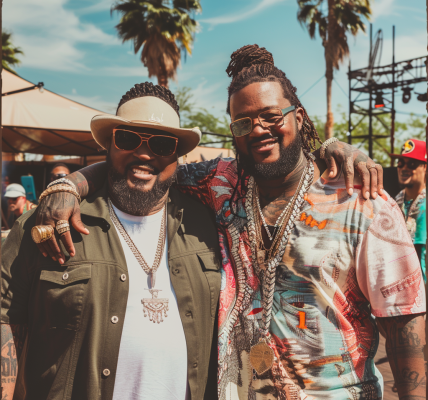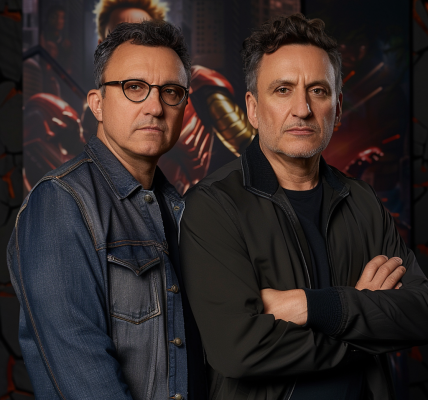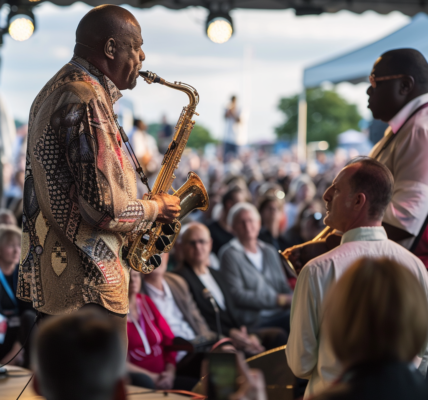In a captivating session at the San Diego Comic-Con, two giants of the Marvel universe, Kevin Feige and C. B. Cebulski, engaged in a lively discussion centered around the profound influence of comic book art on the Marvel Cinematic Universe (MCU). This insightful panel showcased not only the creative synergy between comics and films but also the nostalgia and artistry that define the Marvel brand.
The conversation kicked off with Cebulski, the Marvel editor-in-chief, presenting iconic comic book covers that have left an indelible mark on the cinematic adaptations. Among the highlights was the striking cover of 2007’s Civil War No. 7, featuring Captain America heroically blocking Iron Man’s powerful beam with his shield. This artwork served as a visual inspiration for pivotal scenes in Captain America: Civil War. Another notable mention was the classic cover of Captain America No. 1 from 1939, depicting Captain America delivering a punch to Adolf Hitler, a moment that resonated in Captain America: The First Avenger.
Feige, the head of Marvel Studios, expressed his enthusiasm for a potential feature on Disney+ that would allow viewers to scroll through films and view the comic book art that inspired specific scenes. This idea was met with humor as Cebulski playfully suggested that Feige should leverage his influence to make this dream a reality.
During the panel, Feige shared a humorous anecdote about the casting process for a memorable scene in The First Avenger, where Chris Evans’ character, Steve Rogers, delivers a punch to a character portraying Adolf Hitler during a patriotic road show. The team faced the challenge of casting the actor to play Hitler, ultimately leading to a serendipitous moment with stand-in actor James Payton. Feige recounted how Payton, who did not resemble Hitler at all, was chosen for the role. Feige humorously recalled how Payton had to inform his mother about his unique role: “Mom, I’m in the movie. I’m playing Hitler.” This light-hearted moment brought laughter from the audience, highlighting the camaraderie and creativity that permeates the MCU’s production process.
The panel also featured contributions from two pivotal figures in the MCU’s artistic development: Ryan Meinerding, a long-time concept artist and character designer, and comic book artist Adi Granov. Granov’s contributions to the franchise are particularly noteworthy, as he was approached by director Jon Favreau for his expertise while working on Iron Man, an outreach that occurred through the now-defunct social media platform Myspace. Feige humorously acknowledged this detail, remarking that it made him feel old, further emphasizing the evolution of the entertainment industry.
Both Feige and Cebulski paid tribute to Granov for his work on the cover of Invincible Iron Man No. 76, which has been instrumental in shaping the visual narrative of Iron Man’s character within the MCU. Their discussions underscored the collaborative nature of storytelling that spans both comic books and films, showcasing how artists and filmmakers work hand in hand to create a cohesive universe that resonates with fans.
As the panel progressed, the audience was treated to a deeper understanding of how comic book art serves not just as inspiration but as a foundational element of the storytelling process in the MCU. The interplay between the visual language of comics and the cinematic techniques employed in the films creates a rich tapestry that appeals to both comic book enthusiasts and moviegoers alike.
The event at Comic-Con exemplified the passion and dedication that the Marvel team brings to their projects, as well as their commitment to honoring the source material that has captivated audiences for generations. The enthusiasm shared by Feige and Cebulski reflected the ongoing dialogue within the Marvel community about the future of storytelling and the potential for new features that could bridge the gap between comics and films.
As Marvel continues to expand its cinematic universe, the influence of comic book art remains a critical aspect of its identity. The conversation at Comic-Con not only celebrated the past but also hinted at exciting possibilities for the future, leaving fans eager for what lies ahead in the ever-evolving Marvel landscape.





